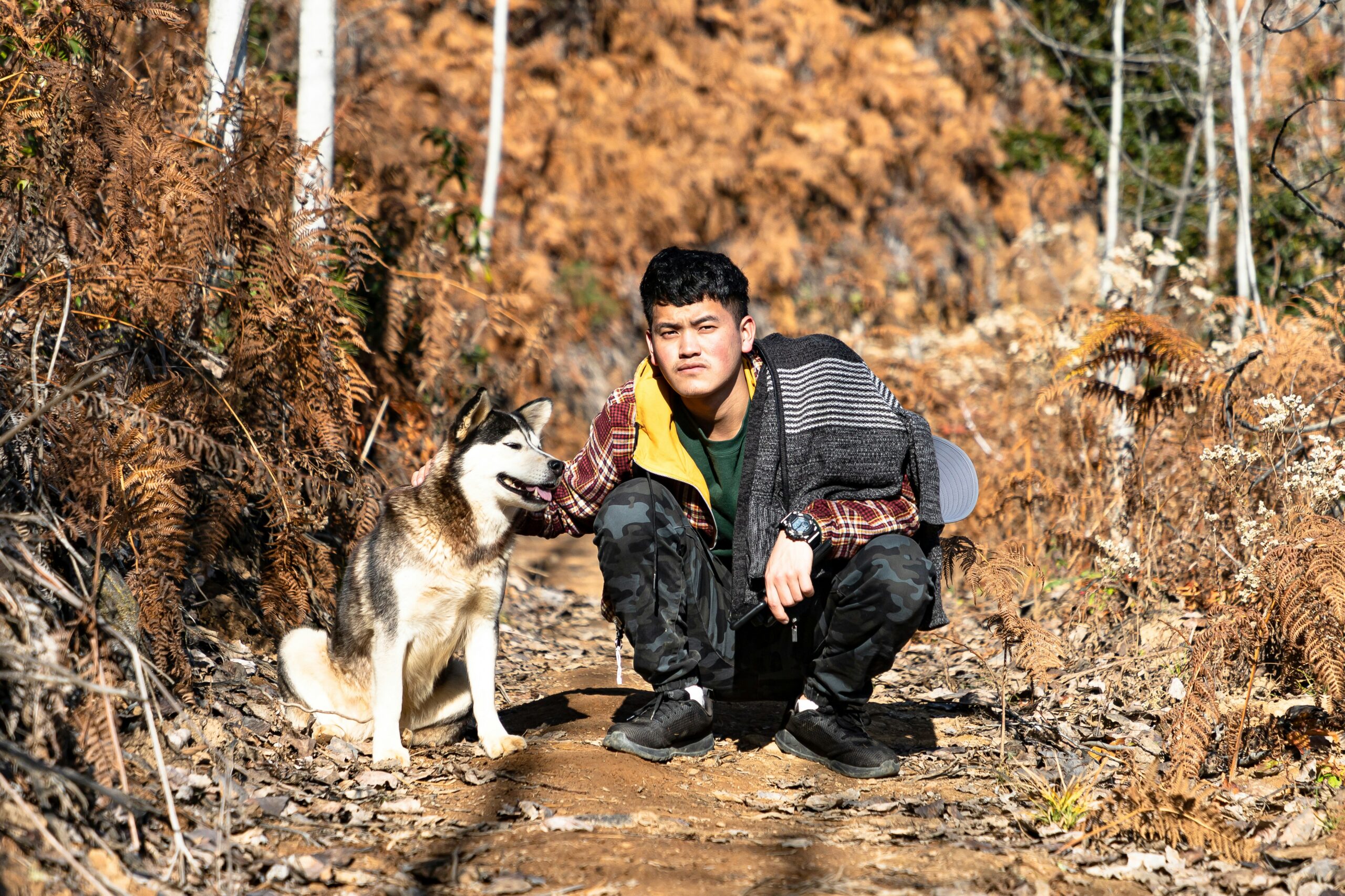Why Do Dogs Get Stuck Together When They Mate?

Introduction
For many dog owners, witnessing dogs getting stuck together during mating can be alarming, especially if they don’t understand why it happens. This phenomenon, known as “tying” or “the tie,” is a natural part of the canine mating process and is essential for successful reproduction. In this blog, we’ll delve into the reasons why dogs get stuck together when they mate, explain the biology behind it, and discuss what you should do if your dogs become tied.
The Canine Mating Process Explained
To understand why dogs get stuck together during mating, it’s essential first to understand the canine mating process. Unlike many other animals, dogs have a unique reproductive system that includes specific adaptations to ensure successful mating.
Key Stages of Canine Mating:
- Courtship and Mounting: The mating process begins with courtship behaviors, such as sniffing and licking. Once the female dog is receptive, the male will mount her.
- Penetration: The male dog penetrates the female, and ejaculation begins almost immediately. During this time, the male’s penis becomes engorged.
- The Tie (Tying): After ejaculation, the male and female dogs become stuck together. This stage is known as the tie and can last from a few minutes to over half an hour.
- Separation: Once the tie is complete, the male’s penis shrinks, allowing the dogs to separate.
What Causes Dogs to Get Stuck Together?
The tie occurs due to a unique feature in the canine reproductive system called the bulbus glandis. This gland is located at the base of the male dog’s penis and plays a crucial role in the mating process.
Biology Behind the Tie:
- Bulbus Glandis: The bulbus glandis is a specialized structure that swells during mating. When the male dog penetrates the female, the gland enlarges and creates a tight seal inside the female’s vagina, preventing semen from leaking out and increasing the chances of successful fertilization.
- Muscle Contractions: The female dog’s vaginal muscles also play a role in the tie. These muscles contract around the bulbus glandis, further securing the male’s penis inside.
- Duration of the Tie: The tie can last anywhere from a few minutes to over 30 minutes. During this time, both dogs may appear uncomfortable or attempt to move, but it’s essential that they remain calm and stationary to avoid injury.
The Purpose of the Tie in Canine Reproduction
The tie is not just an incidental part of the mating process; it serves a specific purpose in canine reproduction.
Importance of the Tie:
- Increased Fertilization Chances: The tie ensures that the male’s semen stays within the female’s reproductive tract, maximizing the chances of fertilization.
- Natural Selection: The tie also acts as a form of natural selection. It ensures that only males with the appropriate anatomy and behavior can successfully mate, thereby passing on their genes to the next generation.
What Should You Do if Your Dogs Get Stuck Together?
If you find your dogs stuck together during mating, it’s important to remain calm and avoid intervening, as this is a natural process. Here’s what you should do:
Do’s and Don’ts:
- Do Stay Calm: Panicking or attempting to separate the dogs forcibly can cause injury to both animals. It’s crucial to remain calm and allow the process to conclude naturally.
- Don’t Intervene: Trying to pull the dogs apart can cause serious damage to the male’s penis and the female’s reproductive tract. Never attempt to separate them by force.
- Do Monitor the Situation: Keep an eye on the dogs to ensure that they don’t panic or injure themselves. Provide a quiet, safe environment where they can complete the tie without disturbance.
- Don’t Scold or Punish: The tie is a natural part of mating, and scolding or punishing the dogs can cause stress and anxiety, potentially leading to injury.
Myths and Misconceptions About the Tie
There are several myths and misconceptions surrounding the tie, some of which can lead to unnecessary worry for dog owners. Let’s debunk a few of these myths:
1. Myth: The Tie is Painful for Dogs
- Fact: While the tie may look uncomfortable, it is not typically painful for the dogs. The dogs may whine or appear restless, but this is usually due to the unfamiliar sensation rather than pain.
2. Myth: Dogs Should Be Separated if They Get Stuck
- Fact: As mentioned earlier, separating dogs during the tie can cause severe injury. The tie is a normal part of mating, and the dogs should be left to separate naturally.
3. Myth: Only Certain Breeds Experience the Tie
- Fact: The tie is a universal aspect of canine reproduction, and it occurs in all breeds of dogs. The duration of the tie may vary, but the process is the same across all breeds.
4. Myth: The Tie Guarantees Pregnancy
- Fact: While the tie increases the chances of pregnancy, it does not guarantee it. Several factors, including the timing of mating, the health of both dogs, and their fertility, play a role in successful conception.
Post-Tie Care: What to Expect
After the tie, the dogs will eventually separate, and the mating process will be complete. However, it’s important to monitor both dogs to ensure they are healthy and comfortable.
Post-Tie Care Tips:
- Check for Injuries: Once the dogs have separated, check both the male and female for any signs of injury or discomfort.
- Provide Water and Rest: The mating process can be exhausting, so provide both dogs with water and a comfortable place to rest.
- Monitor Behavior: Keep an eye on the dogs’ behavior over the next few days. If you notice any signs of distress, discomfort, or unusual behavior, consult your veterinarian.
What If the Tie Doesn’t Happen?
In some cases, dogs may mate without experiencing a tie. This can happen for several reasons, including the inexperience of the male dog, timing issues, or anatomical factors.
Possible Reasons for No Tie:
- Inexperience: Young or inexperienced male dogs may not achieve a tie due to nervousness or lack of experience.
- Timing: If the female is not in the optimal stage of her heat cycle, the tie may not occur.
- Anatomical Issues: Certain anatomical differences or health issues in either the male or female dog can prevent the tie from happening.
What to Do:
- If the tie doesn’t happen, it’s not necessarily a cause for concern. Fertilization can still occur without a tie, although the chances may be slightly lower. If you’re concerned about breeding success, consult with a veterinarian or a professional breeder for advice.
Understanding the Risks: Potential Complications During the Tie
While the tie is generally a safe and natural process, there are some potential risks and complications that dog owners should be aware of.
Potential Complications:
- Injury: If the dogs panic or are forcibly separated during the tie, there is a risk of injury to the male’s penis or the female’s reproductive tract.
- Stress: The tie can be stressful for both dogs, especially if they are inexperienced or in an unfamiliar environment.
- Health Issues: In rare cases, dogs with certain health issues may experience complications during the tie. It’s essential to ensure both dogs are healthy before allowing them to mate.
When to Seek Veterinary Help:
- If the tie lasts longer than 45 minutes or if either dog shows signs of extreme distress or injury, it’s important to seek veterinary assistance immediately.
The Tie in Wild Canines and Other Animals
The tie is not unique to domestic dogs; it also occurs in wild canines such as wolves, coyotes, and foxes. Understanding the tie in wild canines can provide further insight into why this process has evolved.
The Tie in Wild Canines:
- Survival of the Fittest: In the wild, the tie serves as a mechanism for natural selection, ensuring that only the strongest and healthiest males can successfully reproduce.
- Territorial Behavior: The tie also discourages other males from interfering during mating, reducing the chances of conflict and injury.
Comparison with Other Animals:
- Cats: Unlike dogs, cats do not experience a tie during mating. Instead, their mating process is quick, and the male separates from the female immediately after ejaculation.
- Humans: The human reproductive process differs significantly from canines, with no equivalent to the tie in human mating.
Conclusion
The phenomenon of dogs getting stuck together when they mate is a fascinating aspect of canine biology. While it may be surprising or concerning to witness, it’s a natural and essential part of the reproductive process. Understanding why dogs experience the tie, what it means for their reproduction, and how to handle it can help dog owners feel more prepared and confident in caring for their pets during mating. By allowing the process to happen naturally and providing proper post-mating care, you can ensure the health and well-being of your dogs.




